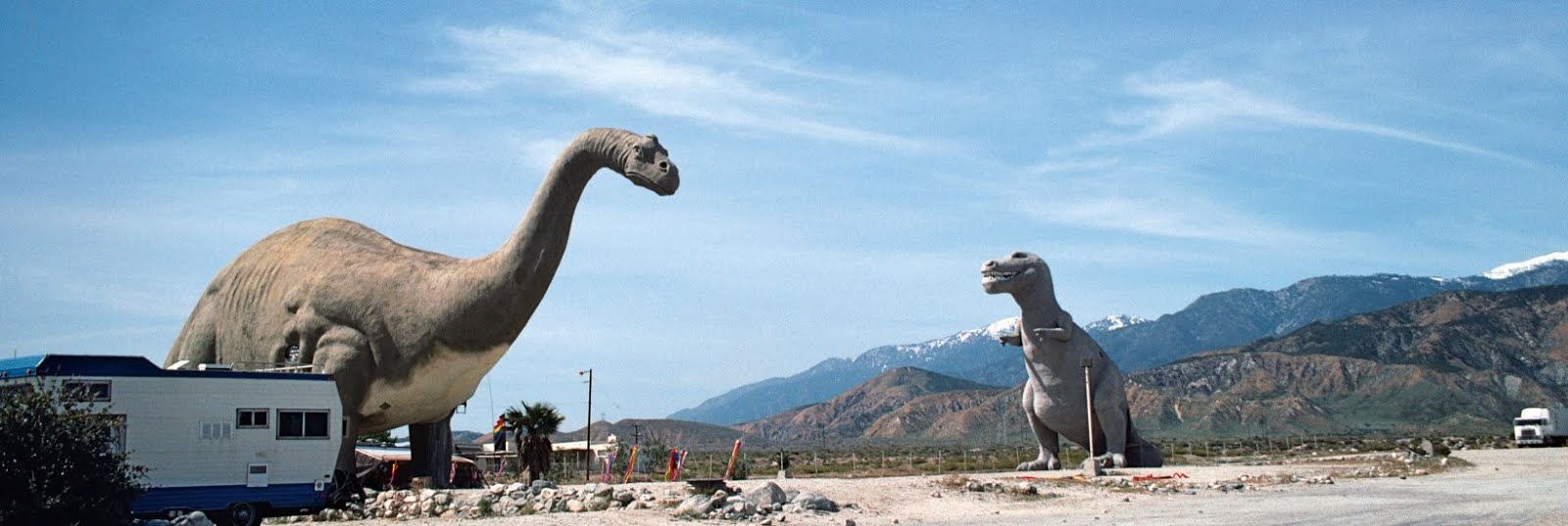California Crazy
In 1980, Los Angeles historian Jim Heimann wrote a book about the oddball attention-grabbing roadside architecture that started popping up in Los Angeles in the 1920's entitled, California Crazy.
Then, 20 years later he followed that book with its sequel, California Crazy and Beyond which was packed with more madcap restaurants, motels, service stations, and many other businesses shaped like hot dogs, animals, airplanes, pianos, and other architectural anomalies.
Now the THIRD edition of Jim Heimann’s California Crazy (now from TASCHEN) is hitting "bookstores" and it's not only brimming with the best examples of this architectural genre, but it also includes essays exploring the influences that fostered this movement.
Here are just twelve excerpts Jim Heimann has included in his latest book:
1. Toed Inn, 12008 Wilshire Boulevard, Los Angeles, California. 1940
A freethinking populace with a desire to reinvent itself and a climate was created that served as the perfect incubator for the outrageous and amazing.
2. Big Donut Drive-In, 805 West Manchester Boulevard, Inglewood, California. 1955
With an urban landscape rapidly closing in, the competition for customers’ attention became acute and the luxury of open space and high visibility the first generation of buildings experienced was no longer there. The giant sign fulfilled the new roadside expectations. Russ Wendell realized this when he planned his Big Donut chain in 1949.
3. Trees of Mystery Park, Redwood Highway, California. 1950
It could well be argued that the high point of California’s image as the land of the unique was directly tied to the emergence of California as Automobile-Land. In addition to providing the means to realize suburbia, that greatest of American ideals, the automobile encouraged an entirely new way to experience the built or planted environment.
4. Sanderson Hosiery, 11711 Olympic Boulevard, West Los Angeles, 1949
Owner AA Sanderson‘Most of the striking commercial statements of this era were reserved for signage, three-dimensional figures, and buildings that were simple to construct.
5. Grauman’s Chinese Theatre, 6925 Hollywood Boulevard, California. 1927
Attendants attired in period outfits led patrons to their seats. Here Sid Grauman initiated and refined the movie premiere by drawing movie stars and the attention of the world to his Hollywood theater. It was another grand illusion on the city streets.
6. Pup Café, 12732 West Washington Boulevard, Culver City, California. 1934
Within LA’s urban spread, the evolving commercial strip of Washington Boulevard in Culver City was littered with a series of fantasy buildings. A precursor to filmland’s famed Sunset Strip, this main artery to the beach also served as a direct route to the many studios in Culver City.
7. Hoot Hoot I Scream, 1201 Valley Boulevard, San Gabriel Valley, 1932
In extending the search for more exotic solutions, Native American imagery was tapped not only for its references to the old West but also for the intrigue of relatively obscure ancient American civilizations.
8. Coffee Pot, 8601 Wilshire Boulevard, Los Angeles, California. 1935
Los Angeles’ gift to America of buildings and signage represents a mixed-up world of fact and myth. Promotional trade, popular, and professional publications obviously delighted in illustrating Los Angeles’ roadside buildings in the forms of oranges, jugs, and flowerpots.
9. Mailbox, Los Angeles, 1917
California’s position as a magnet for nonconformist beliefs further enhanced the construction of buildings in Hollywood.
10. The Brown Derby, 3427 Wilshire Boulevard, Los Angeles, California. 1930
Being across the street from the famed Ambassador Hotel and Cocoanut Grove secured a steady clientele of stars that in turn brought the fans, which made the Derby an instant, and ongoing hit.
11. The Cream Can, Los Angeles, California. 1928
The Hollywood connection, the sprawling geography, and the culture of the automobile propelled this architectural type to prosper and flourish there— making California a bit more crazy than the rest of the world.
12. Bowls of Joy, Pan-Pacific International Exposition, San Francisco. 1915
A fantasy secure behind their walls, the buildings nonetheless drew throngs to the amusement zone and made a lasting impact on the public. These facades would become a key visual language to a broader audience once outside the confines of an enclosed environment.
Ahh...just to go back in time to when Hollywood had buildings like this. We here at IheartHollywood have always loved this book, and we are so happy that a new version is here for the world to discover. Most of these buildings are long gone...but they are not forgotten, and that is why we ❤️ it.
California Crazy
 Reviewed by #IheartHollywood
on
June 07, 2018
Rating:
Reviewed by #IheartHollywood
on
June 07, 2018
Rating:
 Reviewed by #IheartHollywood
on
June 07, 2018
Rating:
Reviewed by #IheartHollywood
on
June 07, 2018
Rating:



















Post a Comment